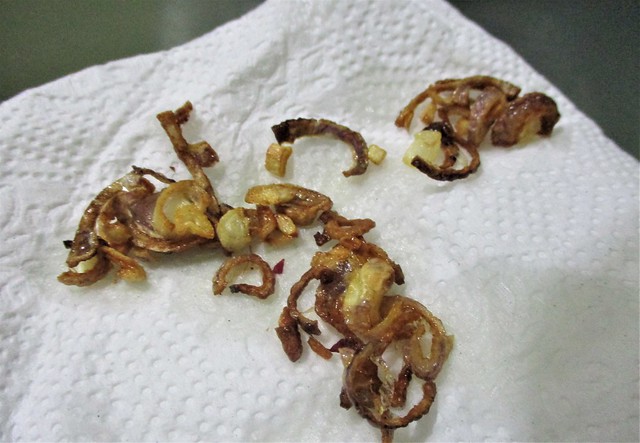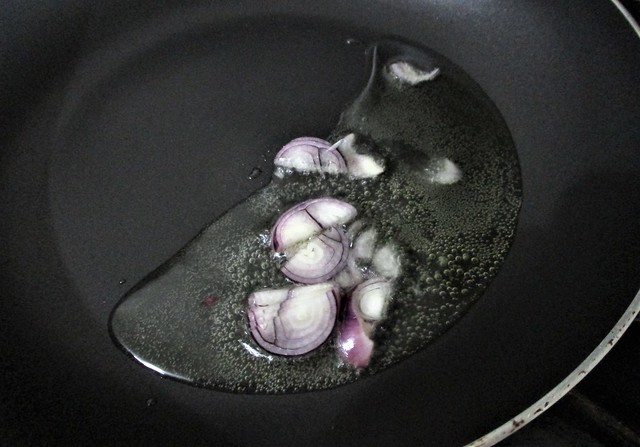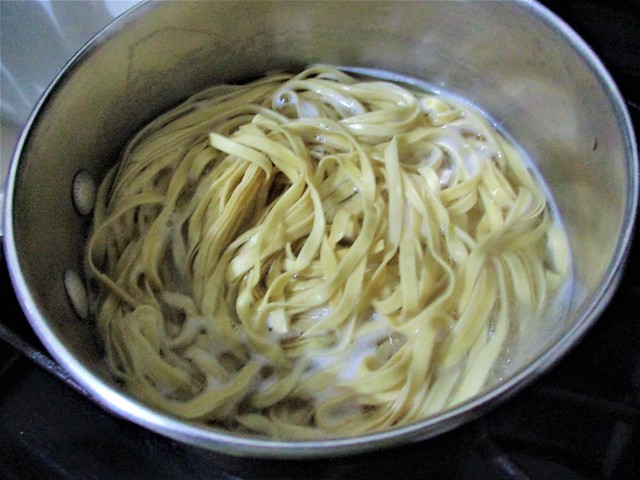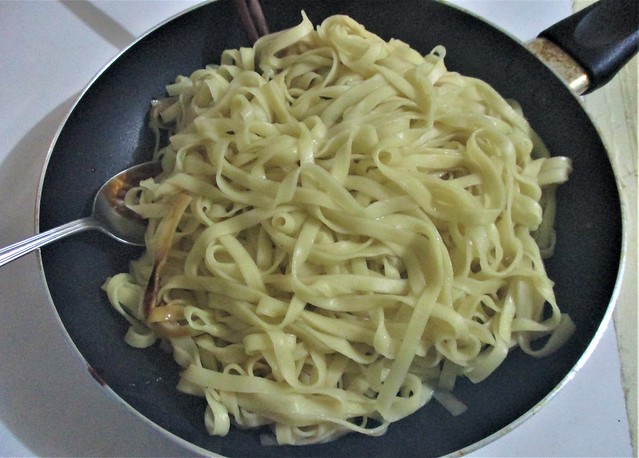Two crucial ingredients in cooking kampua mee are the shallot oil for the tossing and the fried shallots for the garnishing…

Some people will insist on using lard but regular cooking oil will do fine – as long as it is used to fry sliced shallots first for that special fragrance before use. The people at the kampua mee stalls will tell you that they mix the two these days as lard is mighty expensive now so they cannot just use it, unadulterated. That is why many will tell you that the mee at one place is better, nicer than all the rest and most of the time, it is purely because of its stronger lard fragrance.
However, not everyone gets their fried shallots perfectly done. Frying the sliced shallots…

…requires good timing. Once it starts to turn brown, remove it from the oil. Many will wait till it has turned a beautiful golden brown before turning off the fire. It will continue cooking in the residual heat of the hot oil and the pan and will end up burnt. You can see a little bit overdone in the above photograph – I was a bit slow because I was taking photographs of the process at the same time.
From what I have seen at some of the kampua mee stalls, instead of slicing by hand, they just throw the shallots into a food processor. In the end, you get all the minute bits that make the plate of noodles look somewhat messy and dirty. Other than that, at the prices of shallots these days, they may not even bother to garnish with those at all.
I would take the fried shallots out of the oil before using the shallot oil to toss the noodles…

…because when mixed with all the other ingredients and everything, they may turn soggy, not crispy anymore and not quite to my liking. That morning, I added a spoonful of Bovril, a teaspoon of dark soy sauce, pepper, a pinch of msg and some chopped daun sup (Chinese celery) to the shallot oil.
I bought some mee pok (flat noodles) because I could not find any old-school mee kua at my neighbourhood shops. The texture and the taste of the latter are different, much nicer and they are a bit darker, their shade of yellow plus they take a much longer time to cook, something like spaghetti.
Well, as they say, beggars can’t be choosers so I just grabbed what I could lay my hands on and that morning, I cooked two pieces…

…in the saucepan.
Once cooked, I rinsed the noodles thoroughly in water, room temperature, a few times to get rid of the excess starch and then I added the hot water from the boiler and put the saucepan back on the gas stove to heat it up so the noodles would not be served cold.
Making sure that I had drained them really well, I added them to the ingredients in the pan…

…and tossed everything together.
Finally, I garnished the noodles with the fried shallots I had prepared earlier and some more chopped daun sup…

…and my Bovril mee was ready!
Yes, it sure was good especially after not having enjoyed it for a very long time. I had not had it all this while because Bovril was out of stock here for an extended period of time, probably due to the problem with shipping during this pandemic, and when I heard that they had it at a few places in town, I was not all that keen on rushing over to grab a bottle or two but I finally did so that day and I sure am glad that I did!
